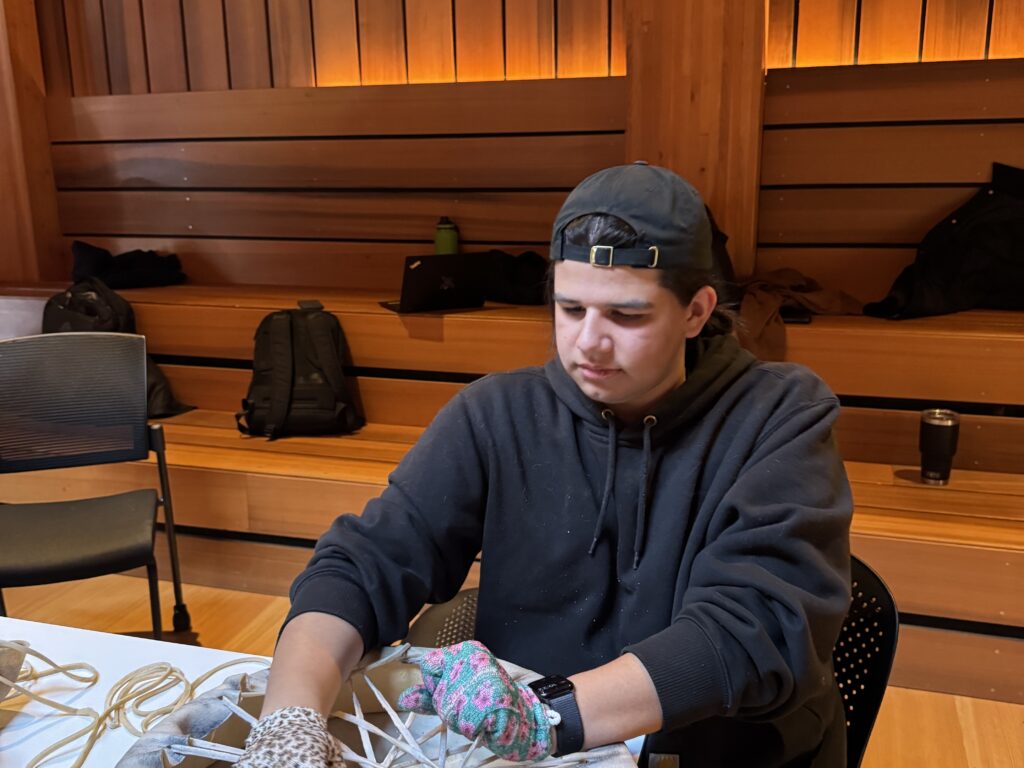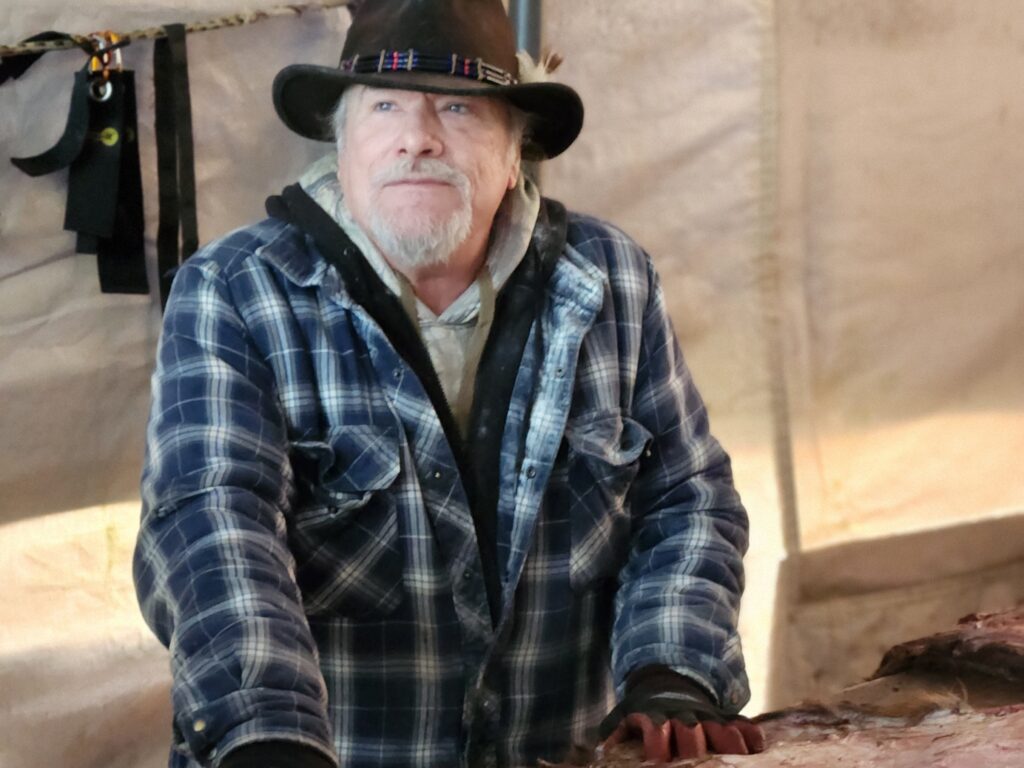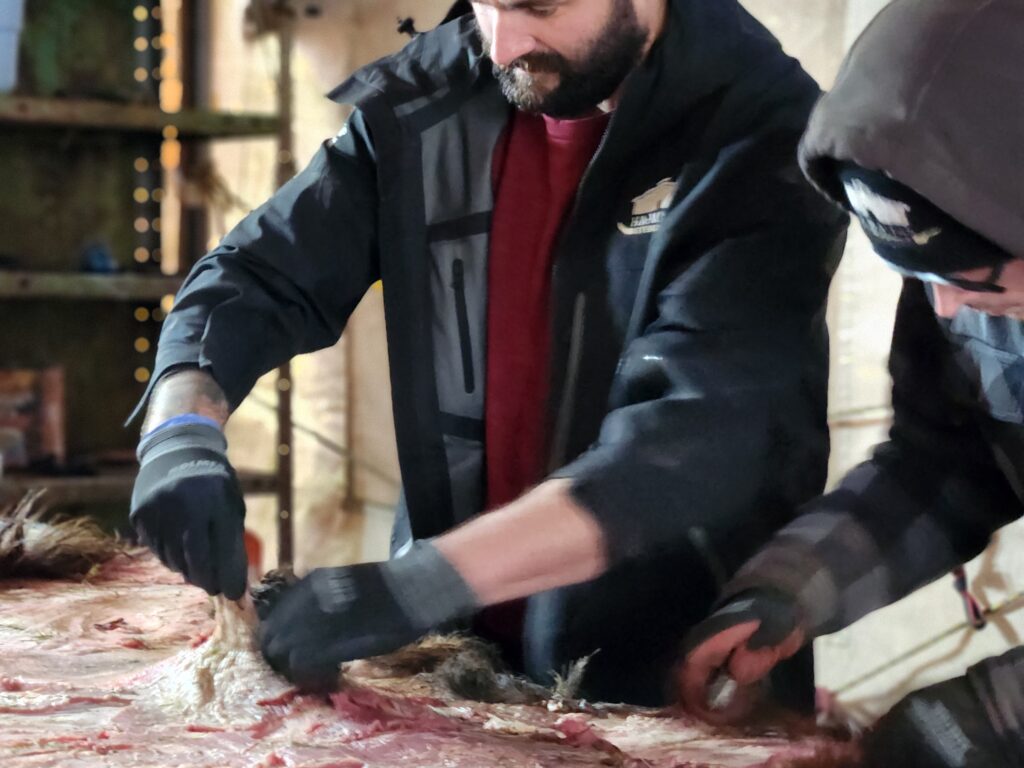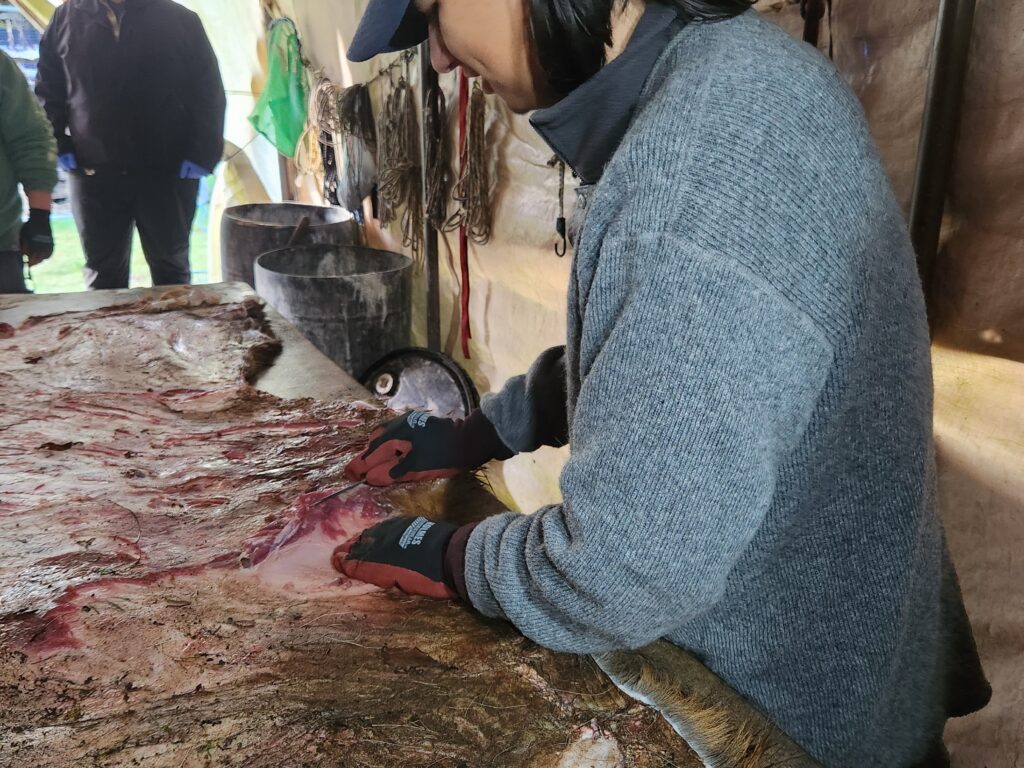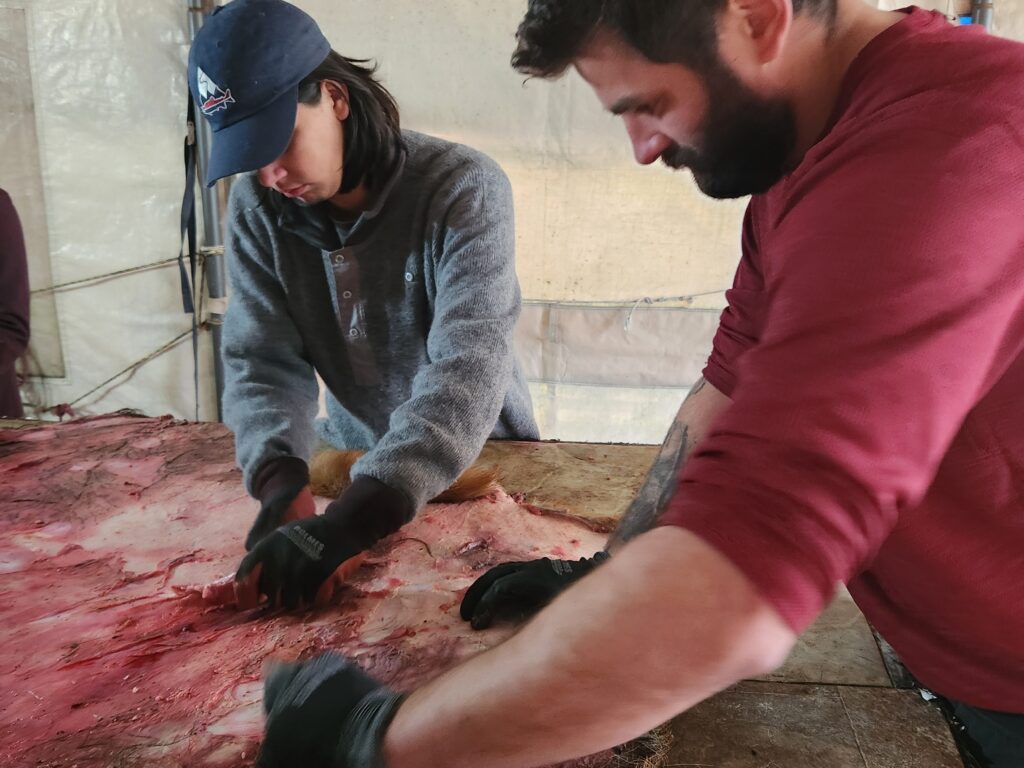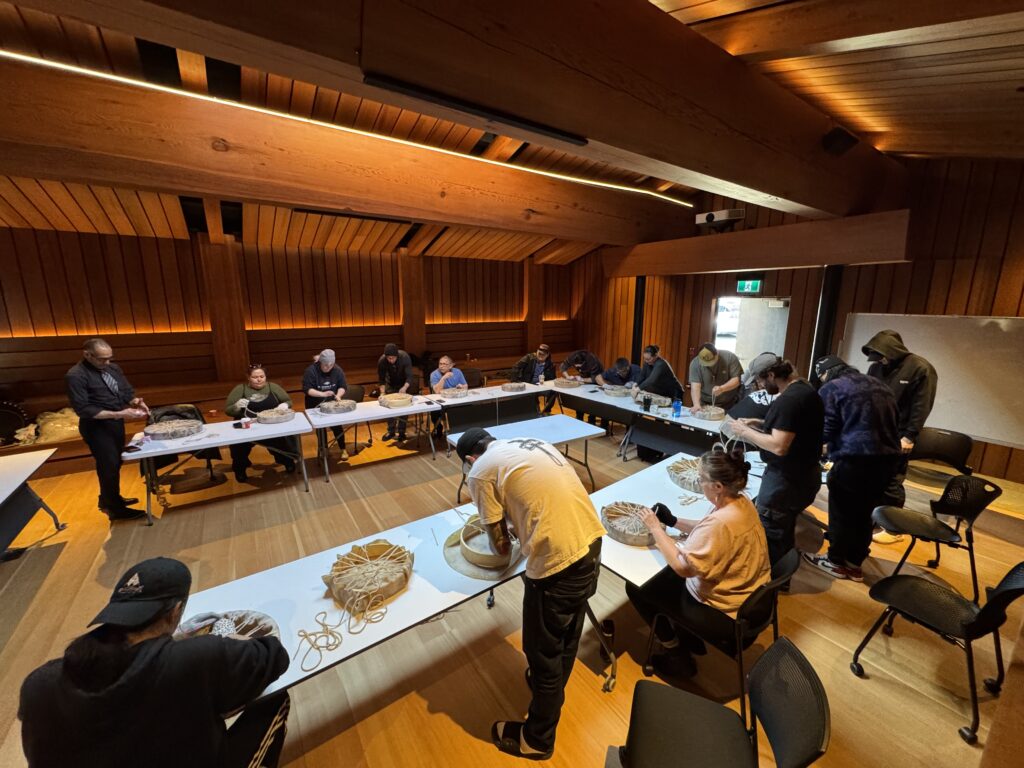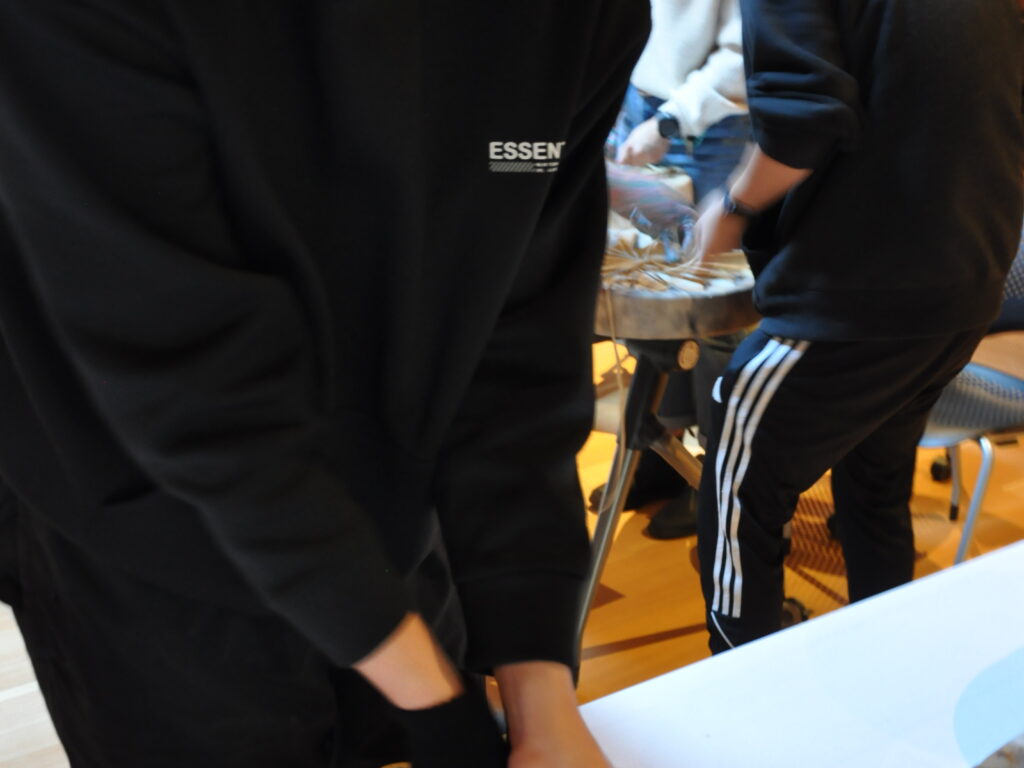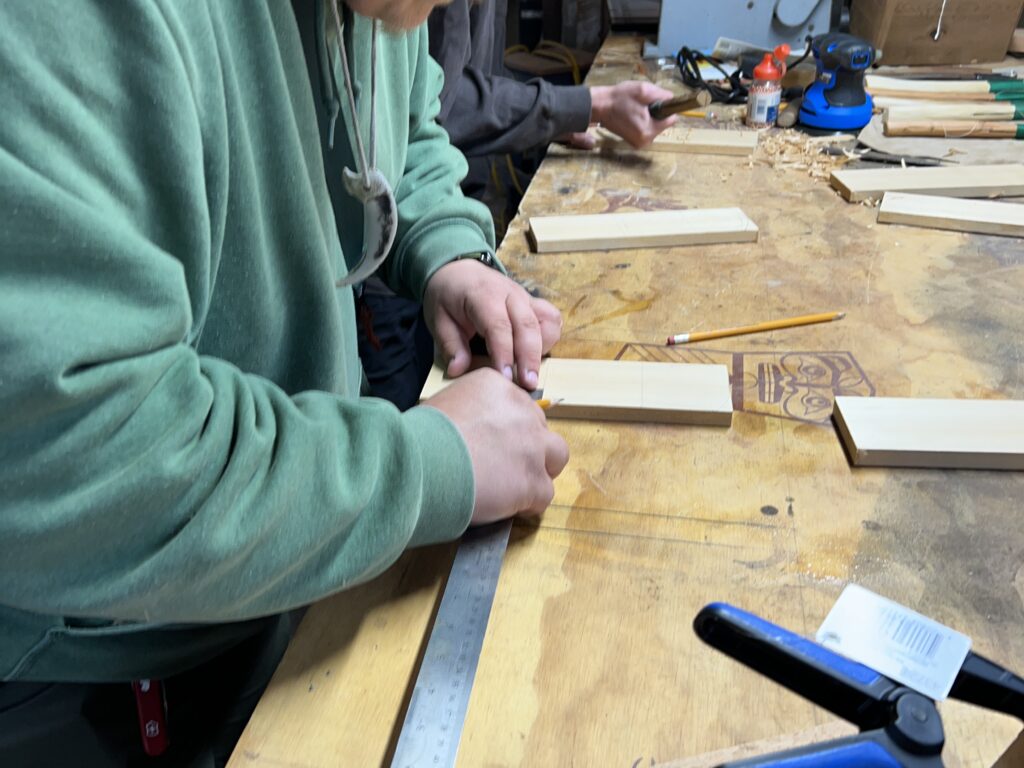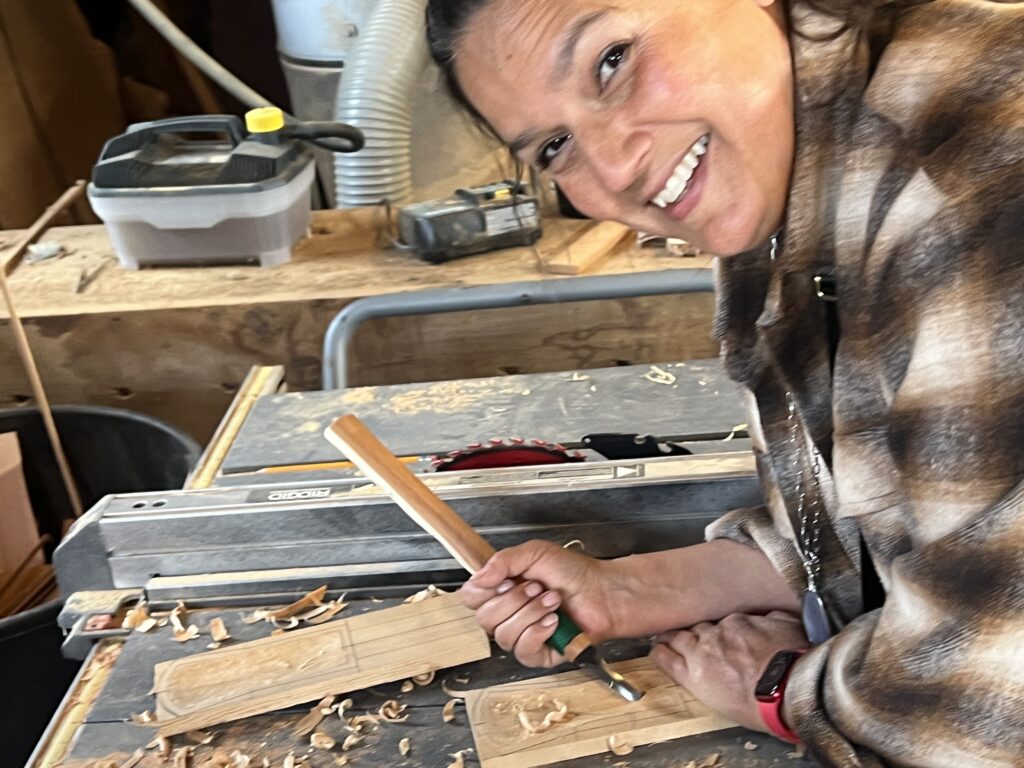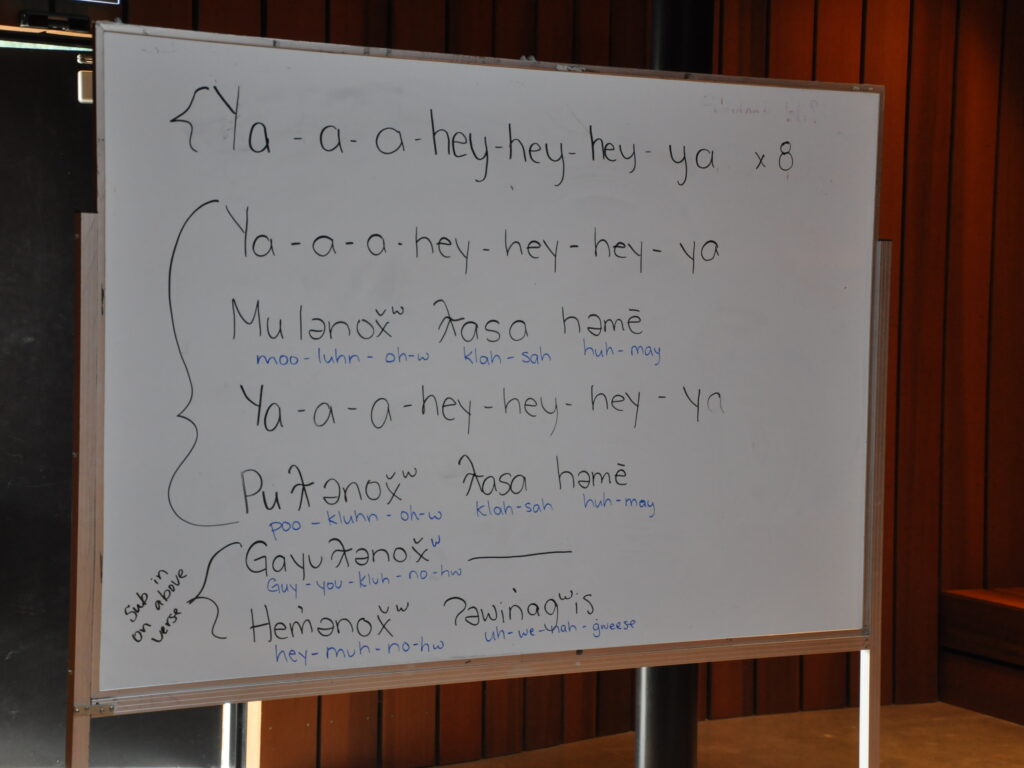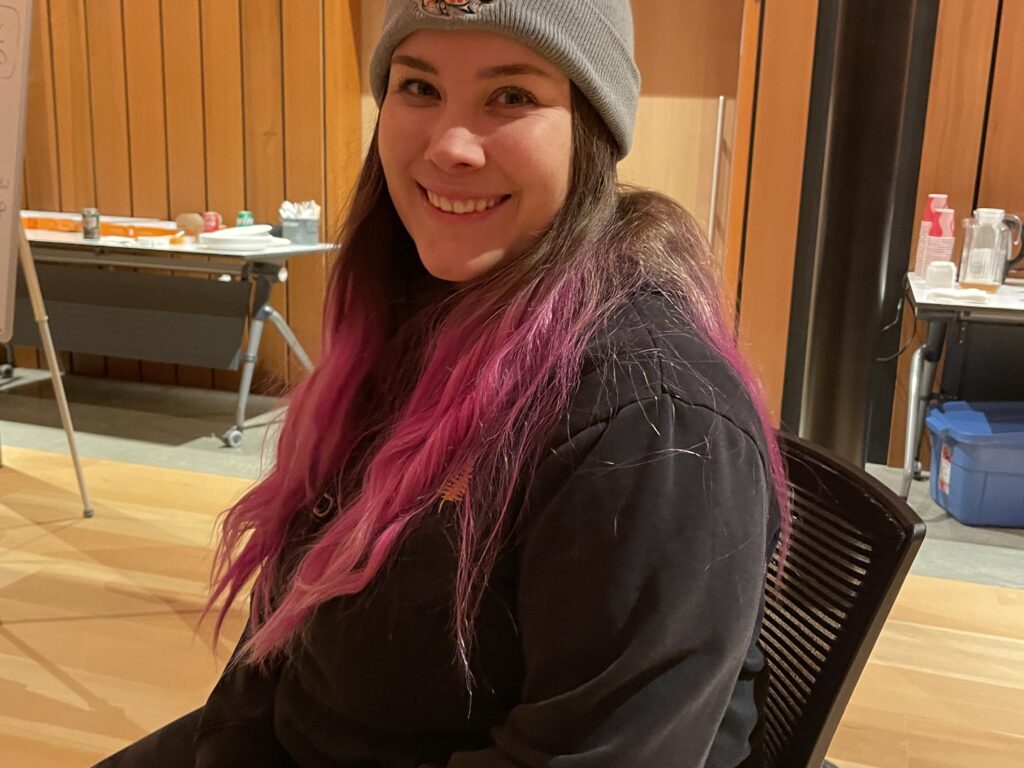
The Ha-ma-yas Guardians have added drums and songs to their stewardship toolkit.
“We talk a lot about the connections between everything, and that’s a big part of being a Guardian, knowing that connection, knowing that everything, from the top of the mountains to the depth of the sea, is connected. That’s really important to understand in what we wanted as part of creating our new songs.”
—Cedar Frank, K’ómoks First Nation Guardian
“It’s a way to bring people together, to create that sense of connection. As Guardians, we’re always out there trying to help the world—people, animals, the land, the air, all of it—work better together. So having these drums and these songs as a tool to create that connection with the land and the water and with other people is a beautiful way to put ourselves and who we are into our work.”
—Tashina James-Matilpi, Nanwakolas Council Guardian Logistics Coordinator,
former Tlowitsis Nation Guardian
Deep connections
Connection to the lands, waters, and creatures in their territories is an integral part of who Guardians are; being a Guardian is far more than just a job but a part of their identity. As the “eyes and ears” out in the territories on behalf of their Nations, that connection and identity are vital. Their local knowledge of the places that they monitor, the names of those places, the oral history that tells the story of those places, and the laws and protocols of their Nations are all part of that deep, intimate connection. So are the stories and songs about those places and those laws and protocols.
As part of the professional training that Guardians undertake, such as the Stewardship Technician Training Program run by Vancouver Island University in partnership with Nanwakolas Council, Guardians study and embrace all of these topics. In 2025, with the assistance of funding from the First Peoples’ Cultural Council, Guardians in the Ha-ma-yas Stewardship Network were also given an opportunity to build on what they know by working with Knowledge Holders in a process to make their own drums, and to compose a Guardian song of their own that would reflect the essence of what it means to be a Guardian.
A meaningful connection
The Guardians could have just been given ready-made drums, but there is a huge difference between buying a drum and making your own drum, says We Wai Kai Guardian Riley Ross-Nelson adamantly. Drumming is an ancient and deeply meaningful practice for First Nations, points out Riley. Typically made from elk skin and red or yellow cedar, these beautiful instruments are imbued with a spirit that is intimately related to the land and creatures from which they are created.
“To have a drum made of materials harvested from our territory, that I made myself, feels so much more connected not just to it but to the lands and waters in my Nation’s territory,” explains Riley. “Also, when I beat that drum, I know the work that went into it, the respect and care that went into it. It gives me a huge appreciation for the drum, it’s very special to me. You can’t buy that.”
“When you make your own personal drum from start to finish, you get to see where your effort was followed through,” agrees K’ómoks First Nation Guardian Matthew Everson. “It is so cool the first time you hear that first beat of your drum. You know it is your own.”
First, catch your elk
Over the course of several months the Ha-ma-yas Guardians worked with Elders, Knowledge Holders, and language and other experts to create their drums, and compose not just one song, but three.
First, supported by We Wai Kai Councillor and hunter Art Wilson, hunters from the We Wai Kai Nation harvested elk in the territory. The Guardians then learned how to clean and prepare the skins with expert drum maker Phil Mills.
The Guardians then spent time learning how to make their drums with We Wai Kai artist Yakawidi (Shawn Decaire), who also supported them as they began creating songs that they could use in their work as Guardians. “Shawn is very passionate about this kind of work,” says Tashina James-Matilpi, who helped coordinate the project. “He shared with us the structure of Kwakwaka’wakw songs and gave us the tools we needed to create songs that mean something to us. He also made it a very safe space for everyone,” adds Tashina. “It can be really nerve-wracking to sing when you’re still learning the language, but it helped that we were all in it together, and that Shawn was so supportive of us.”
Strong connections
Being together with other Guardians who were all learning and working together was a big part of making the experience feel safe and good as well, say Matthew and Riley. “Just being there with everyone and seeing them work together to clean the skins or make their own drums, that was unique,” says Matthew. “When we were practising singing together, it was a really nice experience.”
“One of the goals of the project was definitely to build cohesiveness between the Guardians of the Ha-ma-yas Stewardship Network,” says Charlene Everson, Nanwakolas Council Cultural Capacity Coordinator. “There’s already a brotherhood and sisterhood that exists between all of them from all of the Nanwakolas Council member First Nations, and we wanted to offer something to them to build on that connection in our own way, through learning to make drums and composing their own songs.”
“It’s such an important part of who they are as Guardians, who we are as Indigenous people,” agrees Tashina. “Whenever we get together there is always singing, it’s just part of who we are.”
“It was a lot of fun being together,” recalls Riley. “There where times when it was perfect and times when we messed up but it was always about going through that learning journey together and singing these songs together. We don’t often get those chances to work with Guardians from the other Nations and this project really helped build bridges for me to make those connections with people to learn together and work together.”
Three songs, not just one
The original goal was to create a song that all of the Guardians could use in their work. But after weeks of discussion and sharing ideas, and with the help of Shawn Decaire and language experts Ixtsamatusalagalis (Kirsten Dobler) and Mayanił (Diane Matilpi) to put the concepts the Guardians created together into Kwak’wala/Lik̓ʷala lyrics, the Guardians composed three songs that they wanted to be able to use in their work.
Everyone agreed that they wanted all of their songs to speak to their connection to the lands and waters in their territories. Importantly, they wanted a song that they could use when approaching people in the territories that might not be behaving in a good way – poachers, for example, or even people camping in inappropriate places or disrespecting cultural sites.
“We want these people to understand the relationships that we have with the land that they might not see or understand,” explains Tashina. “We want to show them who we are and connect to them in a good way and build a shared understanding so that we can them educate them about good behaviour in the territories, rather than just confronting them and telling them what they are doing is wrong.”
“We made that song in two parts,” adds Matthew. “We wanted to approach people with the message about connection, then leave them with a feeling of reconciliation. So the first part goes something like this in English: ‘Do you know the land? Do you know our spirit? Do you know the land? We take care together.’ They are simple words, but once you get the meaning of them, they are very powerful. Then the second part is a thank you for listening to us, expressing that we are one together.”
“I really appreciated that part of composing that song,” adds Riley. “It’s sung from a very positive aspect, that this is about who we are, and it comes from a place of resolution and thanks rather than an authoritative position. I really, really liked that.”
The Guardians also composed a feast song, to sing when eating together, and a paddling song. “I love the paddling song,” says Riley enthusiastically. “It’s a song we can all use whenever we are working together, and we already have. Then the feast song, that really resonated with me. That is such a special song and to see how everyone glows when that song is sung, it just has this wow factor. Everybody feels it and we all feel good singing it. It’s a song that can be sung proudly and happily every time we come together.”
An intergenerational journey
“It’s important to share these songs with our partners so that they see who we are, that this is our way of life,” observes Tashina. “It’s not just a job. We’re part of the land and the songs are part of us.” It’s also important to share what has been learned and created with the next generation, adds Tashina. “These are skills that the Guardians can now pass on to the next Guardians that join their teams, and to our kids and future generations of Guardians. Because we were part of the process from beginning to end we can do that.”
This is also just the start, emphasizes Tashina. “These instruments and songs, they are just starting to be shared and used. It is such an exciting time. I am really looking forward to seeing all the different spaces and places that they will be used and bring life to the work of the Guardians.”
Gilakas’la
“I really want to express my gratitude to everyone who helped us do this,” says Riley. “Being a Guardian, there is so much meaning to that. It’s more than stewardship, it’s about who we are and our connection to the land. For me,” he concludes, “this has allowed me to feel more confident in who I am as a Guardian. I’m so happy to truly start to understand the connections, and the songs and why and how they are sung this way. It helps us to grow as Guardians, and to be great humans, not just great Guardians. I am extremely grateful for that.”
